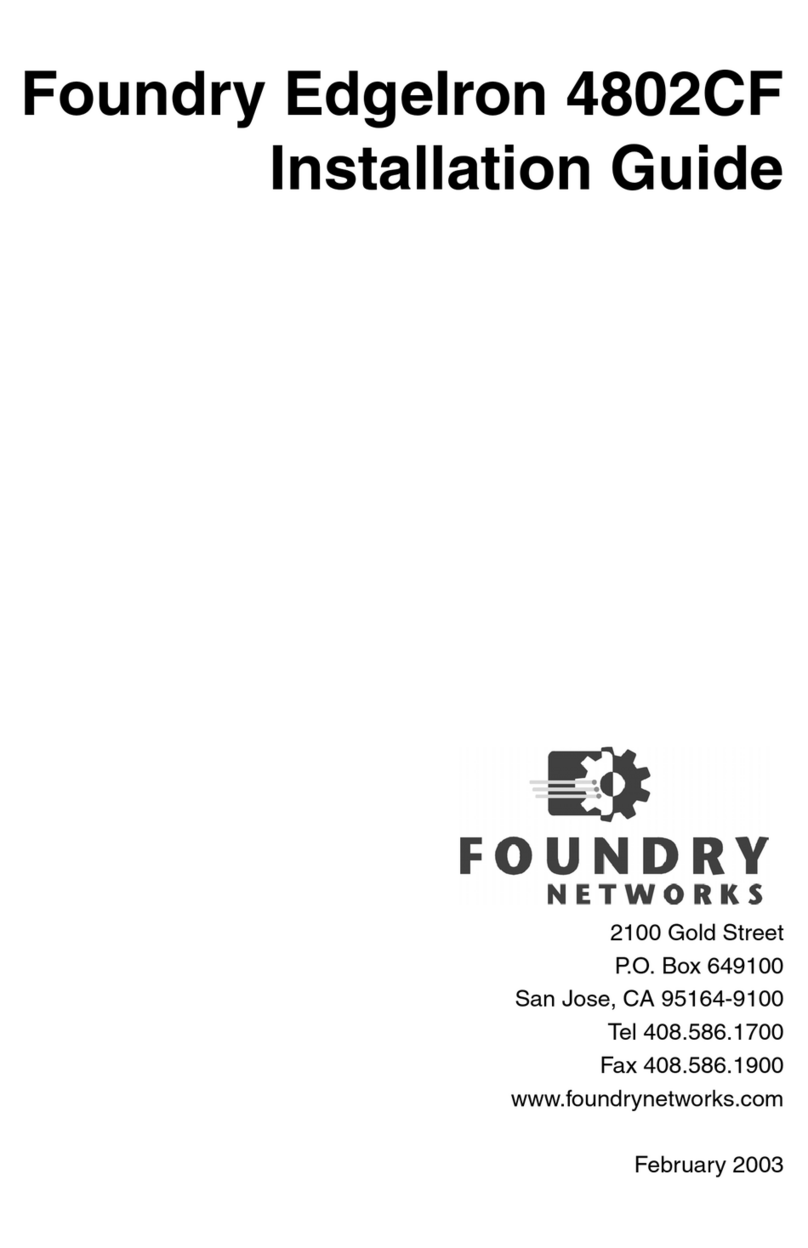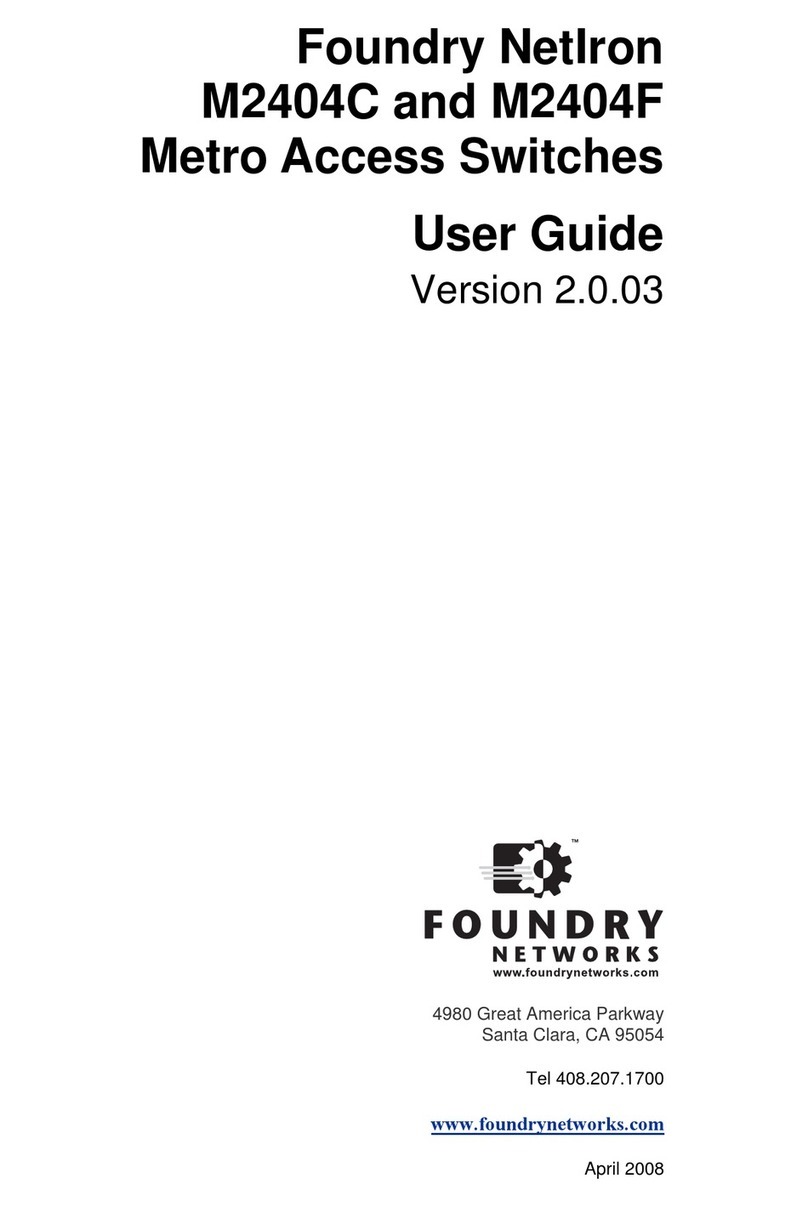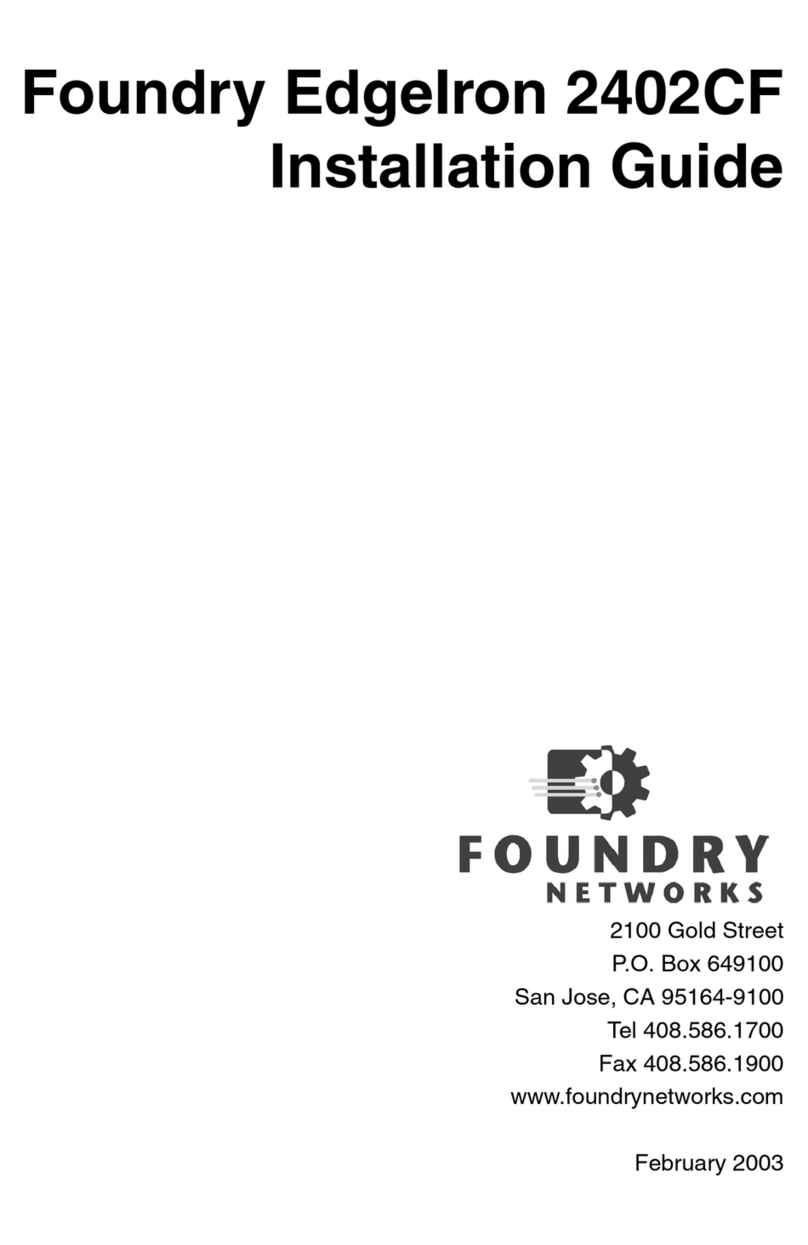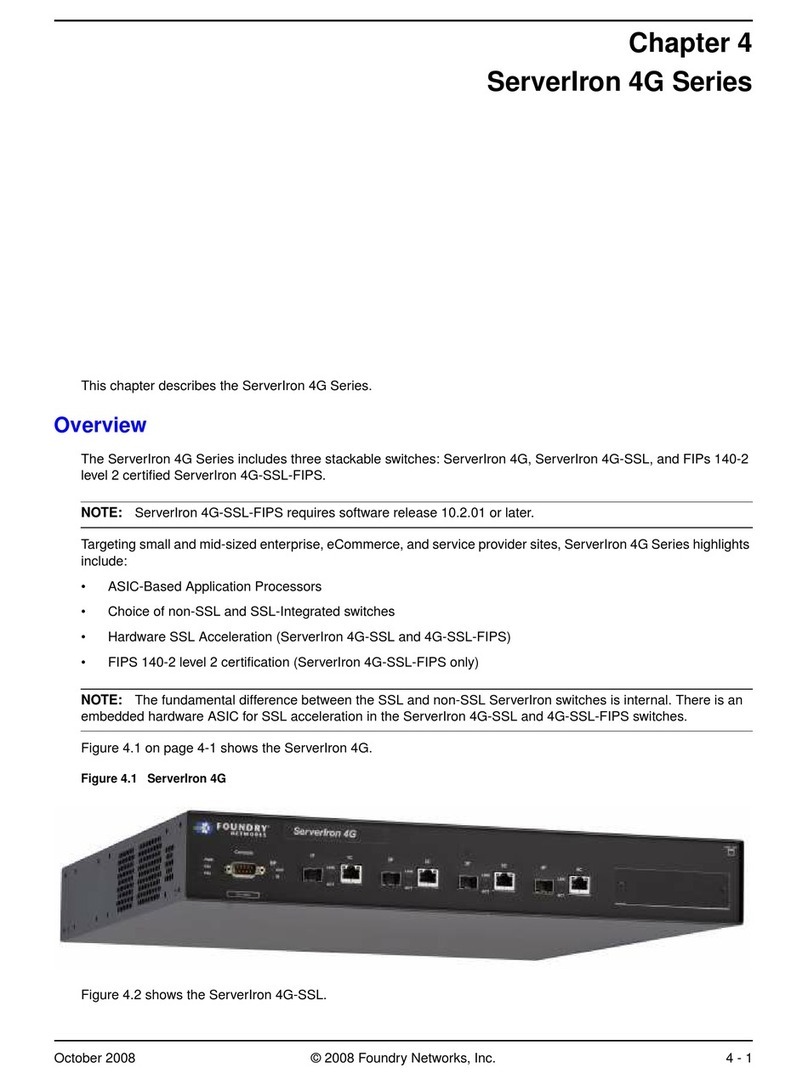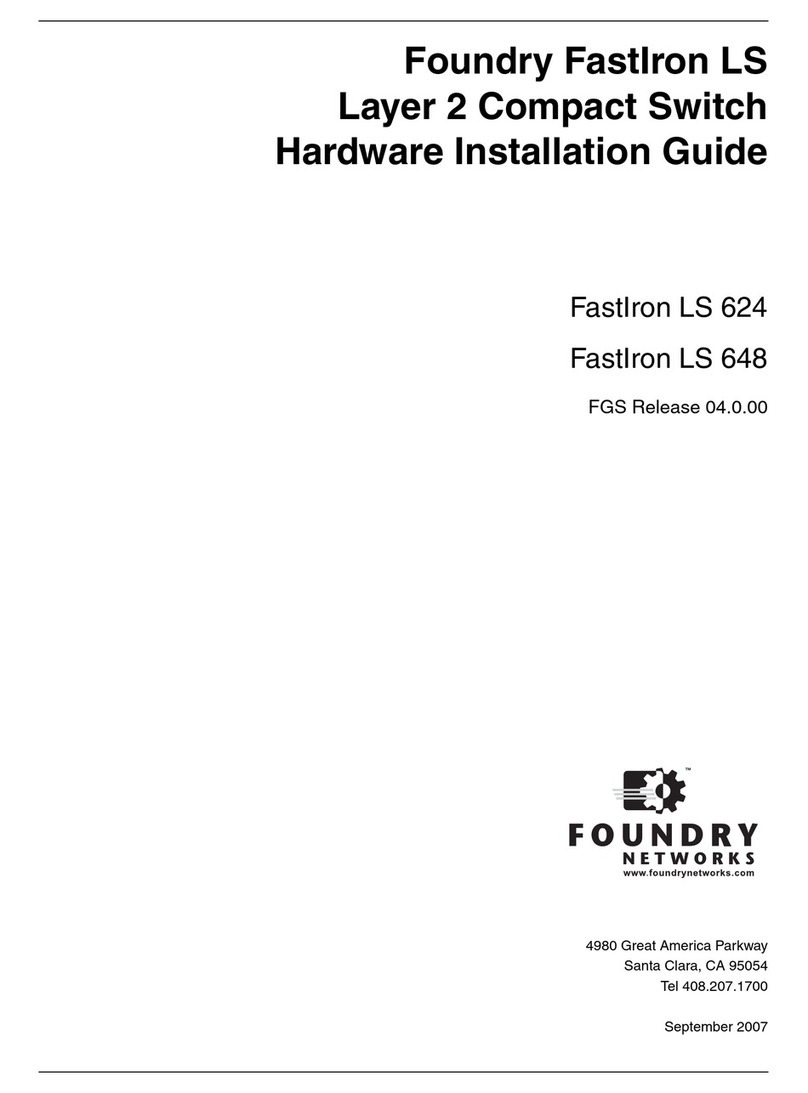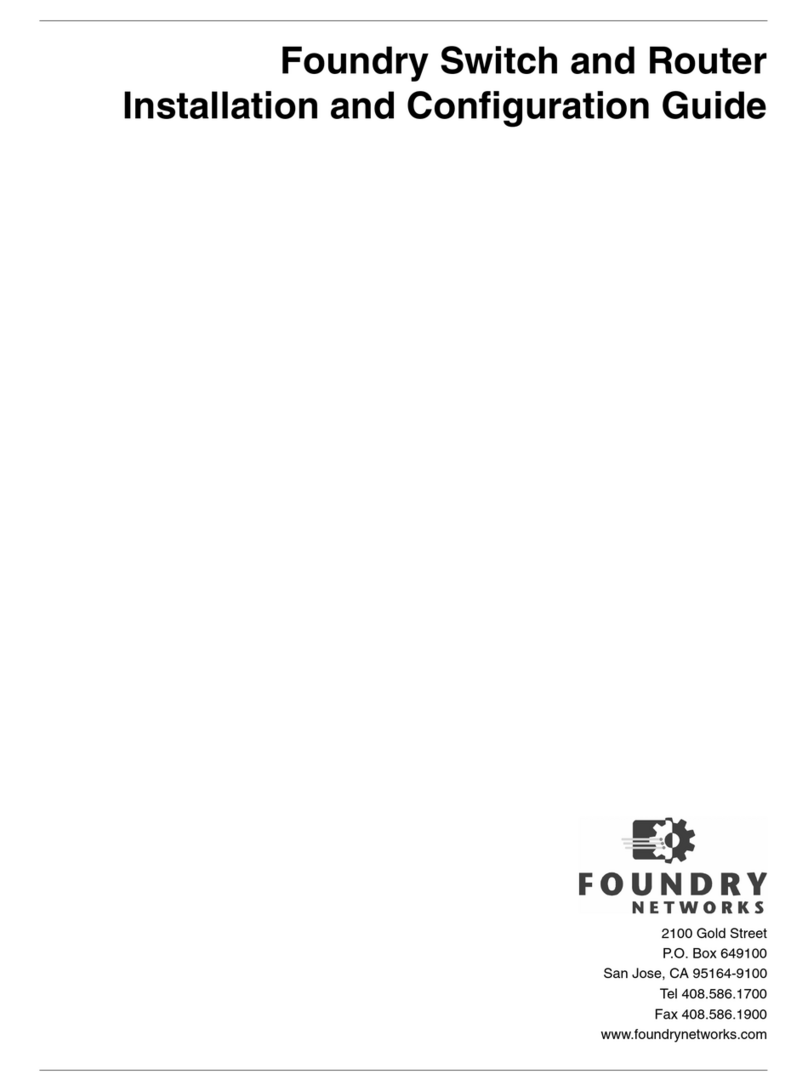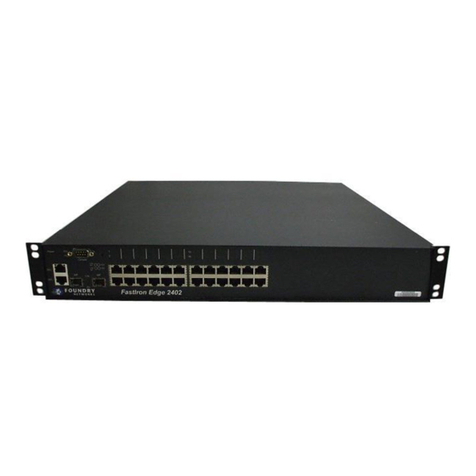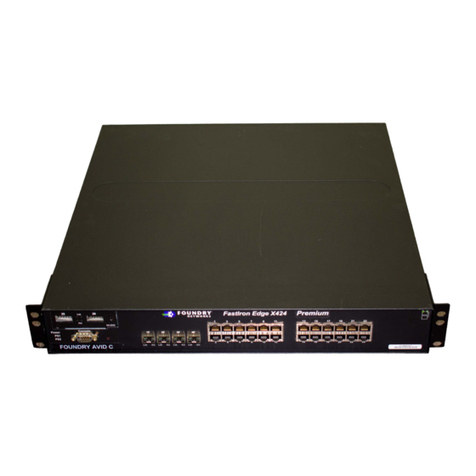
iv © 2008 Foundry Networks, Inc. December 2008
Foundry Hardware Installation Guide for the FES, FESX, and FWSX
NETWORK INTERFACES ......................................................................................................................2-16
POWER SUPPLIES ..............................................................................................................................2-17
COOLING SYSTEM AND FANS ..............................................................................................................2-21
CHAPTER 3
INSTALLING AFASTIRON COMPACT SWITCH ................................................ 3-1
UNPACKING ASYSTEM ................................................................................................................................3-1
PACKAGE CONTENTS ...........................................................................................................................3-1
GENERAL REQUIREMENTS ....................................................................................................................3-1
SUMMARY OF INSTALLATION TASKS .............................................................................................................3-2
INSTALLATION PRECAUTIONS .......................................................................................................................3-3
GENERAL PRECAUTIONS .......................................................................................................................3-3
LIFTING PRECAUTIONS .........................................................................................................................3-3
POWER PRECAUTIONS .........................................................................................................................3-3
PREPARING THE INSTALLATION SITE ............................................................................................................3-5
CABLING INFRASTRUCTURE ..................................................................................................................3-5
INSTALLATION LOCATION ......................................................................................................................3-5
INSTALLING AREDUNDANT POWER SUPPLY .................................................................................................3-5
INSTALLING AN AC POWER SUPPLY ......................................................................................................3-5
INSTALLING ADC POWER SUPPLY ........................................................................................................3-6
INSTALLING THE DEVICE ..............................................................................................................................3-7
DESKTOP INSTALLATION .......................................................................................................................3-7
RACK MOUNT INSTALLATION .................................................................................................................3-7
POWERING ONTHE SYSTEM .......................................................................................................................3-9
VERIFYING PROPER OPERATION .................................................................................................................3-9
OBSERVING THE POWER STATUS LEDS..............................................................................................3-10
ATTACHING APC OR TERMINAL ................................................................................................................3-11
CHAPTER 4
CONNECTING NETWORK DEVICES AND
CHECKING CONNECTIVITY ........................................................................... 4-1
ASSIGNING PERMANENT PASSWORDS .........................................................................................................4-1
RECOVERING FROM ALOST PASSWORD ................................................................................................4-2
CONFIGURING IP ADDRESSES .....................................................................................................................4-3
IPV4 DEVICES ......................................................................................................................................4-3
IPV6 DEVICES ......................................................................................................................................4-4
CONNECTING NETWORK DEVICES ...............................................................................................................4-6
CONNECTORS AND CABLE SPECIFICATIONS ...........................................................................................4-6
CONNECTING TO ETHERNET OR FAST ETHERNET HUBS .........................................................................4-6
CONNECTING TO WORKSTATIONS, SERVERS, OR ROUTERS ...................................................................4-8
CONNECTING ANETWORK DEVICE TO AFIBER PORT .............................................................................4-8
USING ACX4 TRANSCEIVER .................................................................................................................4-9
TESTING CONNECTIVITY ............................................................................................................................4-10
PINGING AN IP ADDRESS ....................................................................................................................4-10
OBSERVING LEDS..............................................................................................................................4-10
